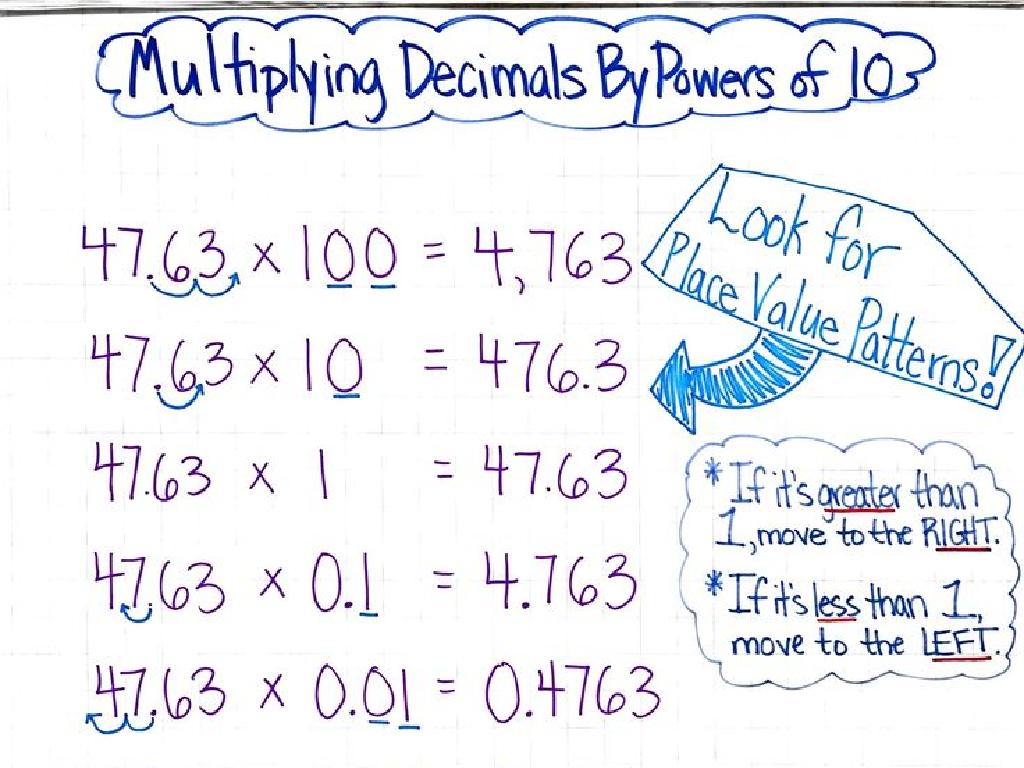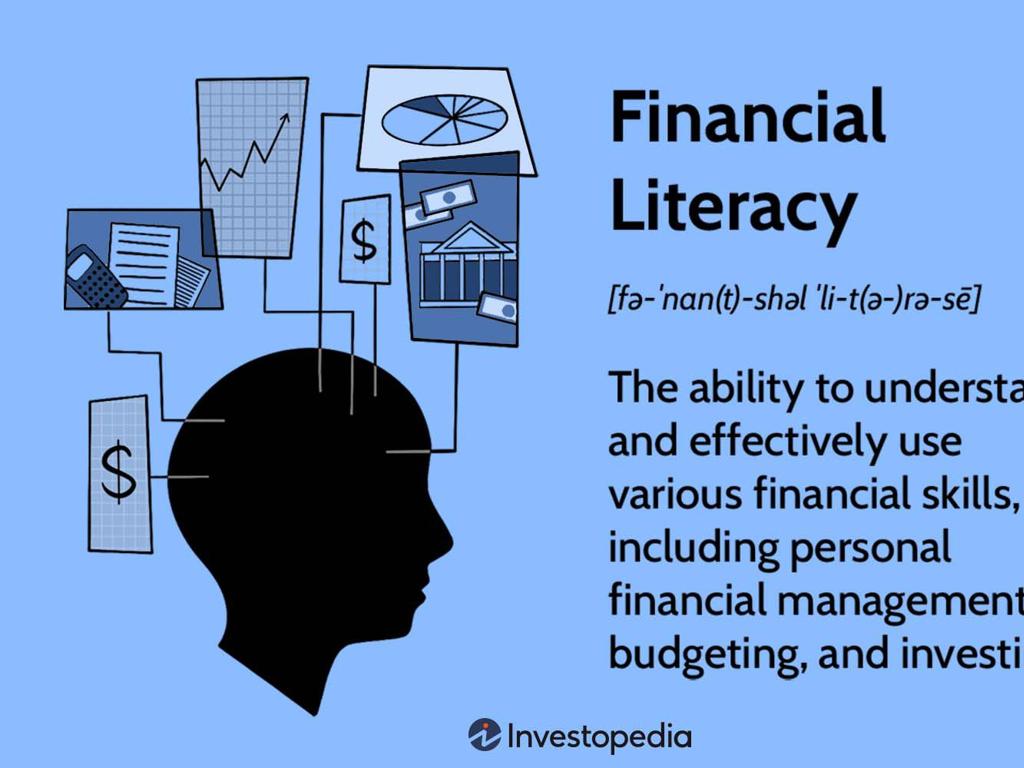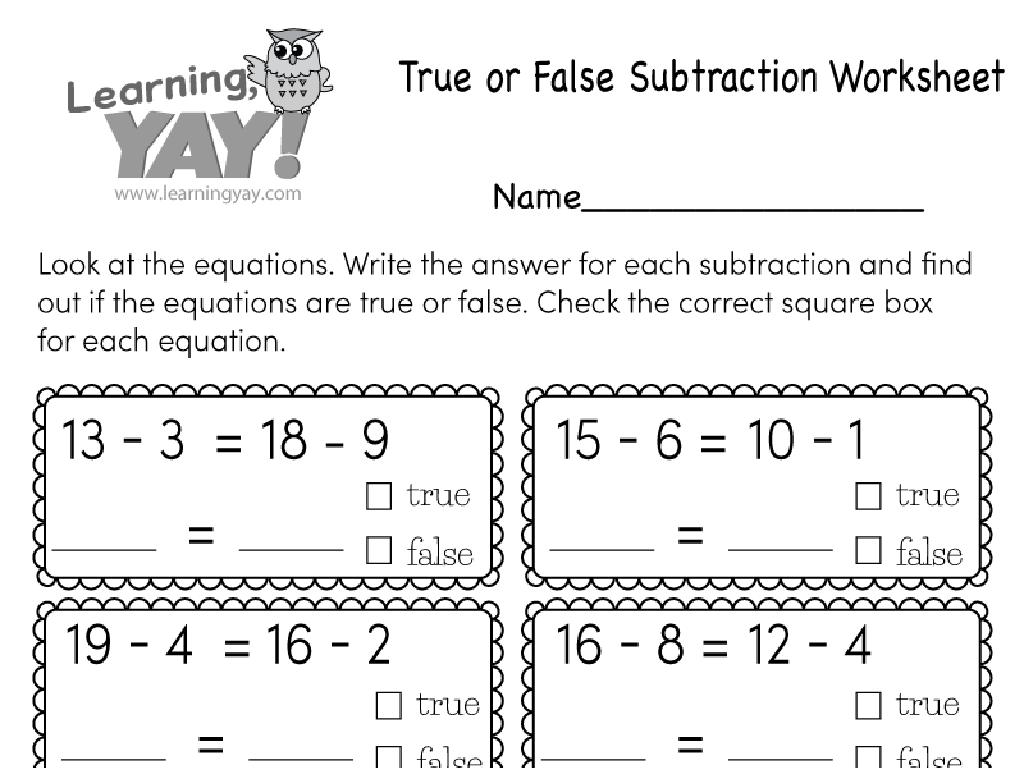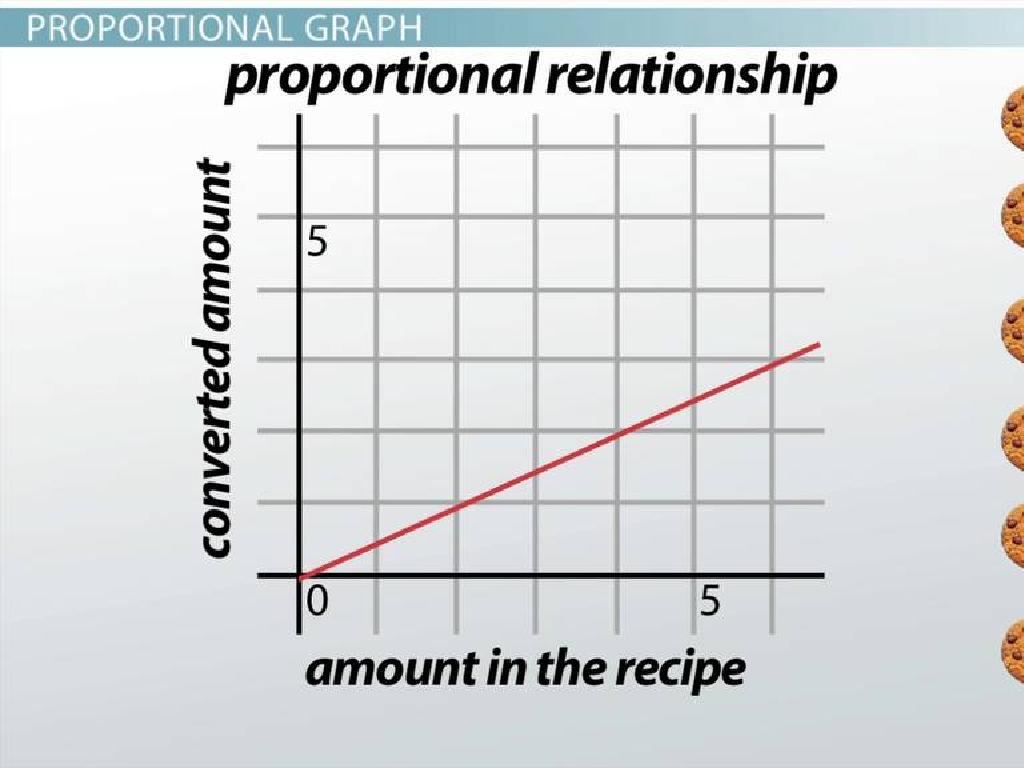Write Linear Functions: Word Problems
Subject: Math
Grade: Eighth grade
Topic: Linear Functions
Please LOG IN to download the presentation. Access is available to registered users only.
View More Content
Introduction to Linear Functions
– Understanding linear functions
– A linear function forms a straight line graph.
– Linear relationships in real life
– Examples: phone bill over time, distance vs. time.
– Writing functions from word problems
– Translate real-world situations into equations.
– Today’s lesson overview
|
Begin the lesson by explaining what a linear function is and how it can be represented graphically as a straight line. Emphasize the importance of linear functions in understanding relationships between two variables in various fields such as economics, science, and everyday life. Provide real-life examples to illustrate linear relationships, such as how a phone bill might increase with more usage or how distance traveled relates to time when moving at a constant speed. Transition to the main focus of the lesson, which is writing linear functions from word problems. Explain that this skill allows students to model and solve real-world problems mathematically. The overview of today’s lesson should include objectives and the expectation that by the end of the lesson, students will be able to identify linear relationships in word problems and write corresponding linear functions.
Understanding Linear Functions
– Define a linear function
– A function with a constant rate of change, represented by a straight line
– General form: y = mx + b
– ‘m’ is the slope, ‘b’ is the y-intercept
– Identify linear functions
– Equations with degree 1 are linear, e.g., 2x + 3y = 6
– Linear functions in graphs
– Straight lines on a graph represent linear functions
|
Introduce the concept of linear functions by defining them as equations that form straight lines when graphed. Emphasize the importance of the slope ‘m’ and the y-intercept ‘b’ in the general form y = mx + b. Explain how to identify linear functions by looking for a degree of 1 in equations and straight-line graphs. Provide examples of linear equations and graph them to visually demonstrate the concept. Encourage students to practice by identifying linear functions in both their equation form and graphical representation. This foundational knowledge will be crucial for solving word problems involving linear functions.
Slope-Intercept Form in Linear Functions
– ‘m’ represents the slope: rate of change
– Slope (m) indicates how steep a line is
– ‘b’ represents the y-intercept: starting value
– Y-intercept (b) is where the line crosses the Y-axis
– Real-world examples of slope-intercept
– E.g., cost of items (m) over time (b)
– Writing equations from word problems
– Translate a story problem into y = mx + b
|
This slide introduces the slope-intercept form of a linear equation, y = mx + b, where ‘m’ is the slope and ‘b’ is the y-intercept. Emphasize that the slope represents the rate at which one variable changes in relation to another, and the y-intercept is the value where the line crosses the Y-axis, representing the starting point of the function. Provide real-world examples, such as the cost of items increasing over time, to illustrate the concept. Encourage students to practice writing their own linear equations from word problems by identifying the rate of change and the starting value within the context of the problem.
Interpreting Word Problems with Linear Functions
– Identify keywords for linear relationships
– Look for ‘per’, ‘each’, or ‘every’ to find a constant rate of change
– Translate word problems into equations
– Convert the problem’s narrative into a mathematical y=mx+b format
– Practice: Write an equation from a description
– Example: A taxi charges $3 per mile. Write the cost ‘c’ for ‘m’ miles.
– Understand slope-intercept form
– y=mx+b, where ‘m’ is the rate of change, and ‘b’ is the starting value
|
This slide aims to equip students with the skills to interpret linear relationships in word problems. Emphasize the importance of identifying keywords that suggest a constant rate of change, such as ‘per’, ‘each’, or ‘every’. Guide students through the process of translating the narrative of a word problem into a linear equation, typically in slope-intercept form (y=mx+b). Use practical examples, like a taxi fare problem, to illustrate how to write an equation based on a given description. Encourage students to practice with various word problems to become comfortable with the translation process. The goal is for students to recognize patterns in word problems that can be represented by linear functions.
Writing Equations from Word Problems
– Formulating linear equations guide
– Step-by-step process to create equations from word scenarios
– Example: Story problem to function
– E.g., A taxi charges a flat fee plus a per mile rate. How to express this cost as a function?
– Pair up for group activity
– Write equations from problems
– Each pair receives a unique problem to solve
|
This slide introduces the process of writing linear equations from word problems, a key skill in algebra. Start with a clear, step-by-step guide to help students understand how to translate a word problem into a mathematical equation. Provide a concrete example, such as a taxi fare problem, where students can identify the fixed fee as the y-intercept and the per mile charge as the slope of the linear function. For the group activity, ensure students are paired effectively and distribute different word problems to each pair. Provide detailed guidelines for the teacher to facilitate the activity, including possible scenarios like budgeting, distance-rate-time problems, and temperature conversion. Encourage collaboration and guide students to present their equations and reasoning to the class.
Practice Problems: Linear Functions
– Solve individual word problems
– Discuss various solving strategies
– Share how you approached the problem and the solution you found.
– Engage in guided practice
– Work through problems with the class, step by step.
– Receive immediate teacher feedback
– Understand mistakes and correct them quickly.
|
This slide outlines the structure for a class activity focused on solving linear function word problems. Students will begin by working individually on different problems, allowing them to apply concepts independently. Afterward, they’ll engage in a group discussion to share their solutions and the strategies they used, fostering a collaborative learning environment. The teacher will then lead a guided practice session, providing step-by-step assistance and ensuring students receive immediate feedback on their work. This approach helps students understand the material deeply, learn from their peers, and recognize common pitfalls in problem-solving. Prepare 4-5 diverse word problems for individual practice, ensuring they cover different aspects of writing linear functions. During the discussion, encourage students to explain their reasoning. For guided practice, select problems that have been challenging for students in the past or that illustrate common errors to watch out for.
Class Activity: Linear Functions in Business
– Create a mock business scenario
– Determine pricing strategies
– How price changes with quantity sold
– Formulate linear equations
– Use y = mx + b to model cost and revenue
– Present and discuss solutions
|
This activity is designed to apply students’ knowledge of linear functions to a practical business context. Divide the class into small groups and provide each with a mock business scenario, such as running a lemonade stand. Students will use linear equations to determine how to price their product based on costs and desired profit, understanding the relationship between price, cost, and revenue. Each group will then formulate a linear equation that represents their pricing strategy. Afterward, groups will present their strategies and equations to the class, followed by a discussion on the different approaches. Encourage students to explore how linear functions can be used to make predictions and inform decisions in a business setting. Possible activities include varying the cost of production, predicting profits, or adjusting prices based on demand.
Review and Reflection: Linear Functions
– Recap key concepts
– Reflect on translation process
– How we turn real-world situations into mathematical expressions
– Engage in Q&A session
– Address any uncertainties
|
This slide aims to consolidate the learning from today’s lesson on writing linear functions from word problems. Begin with a brief recap of the key concepts, such as identifying variables, constructing equations, and understanding the slope-intercept form. Encourage students to reflect on the steps they take when translating a word problem into a linear function, emphasizing the importance of understanding the context and picking out relevant information. Open the floor for a Q&A session, allowing students to ask questions and express any doubts they may have. This is crucial for assessing their comprehension and addressing any areas of confusion. Provide guidance on common challenges students may face and offer strategies to overcome them. The goal is to ensure students leave the class with a clear understanding of the topic and confidence in their ability to tackle similar problems independently.
Homework: Crafting Linear Functions from Word Problems
– Solve word problems to create functions
– Find real-life linear relationships
– Examples: budgeting money, distance over time
– Utilize available resources
– Textbook, online platforms, study groups
– Practice makes perfect
|
This homework assignment is designed to reinforce students’ understanding of linear functions through practical application. Encourage students to solve the provided word problems by setting up and creating linear functions. They should also seek out real-world examples of linear relationships, such as budgeting their allowance over weeks or analyzing the distance traveled over time during a trip. Remind them to make use of all available resources for extra practice, including their textbook, educational websites, and forming study groups with peers. Emphasize the importance of consistent practice to improve their skills in writing and interpreting linear functions.
Wrapping Up: Linear Functions
– Significance of linear functions
– Essential for advanced math topics
– Practice with real-world problems
– Apply to tasks like budgeting or planning
– Preview: Graphing Linear Functions
– Next, we’ll visualize functions on graphs
– Keep exploring and questioning
|
Understanding linear functions is crucial as they form the foundation for higher-level mathematics, including algebra and calculus. Encourage students to continue practicing by relating the concepts to real-world scenarios, such as calculating expenses or predicting outcomes. Previewing the next lesson on graphing will prepare them for visual representation of functions, which is a key skill in math. Remind students that the ability to write and interpret linear functions will greatly benefit their problem-solving skills in various aspects of life and education.






